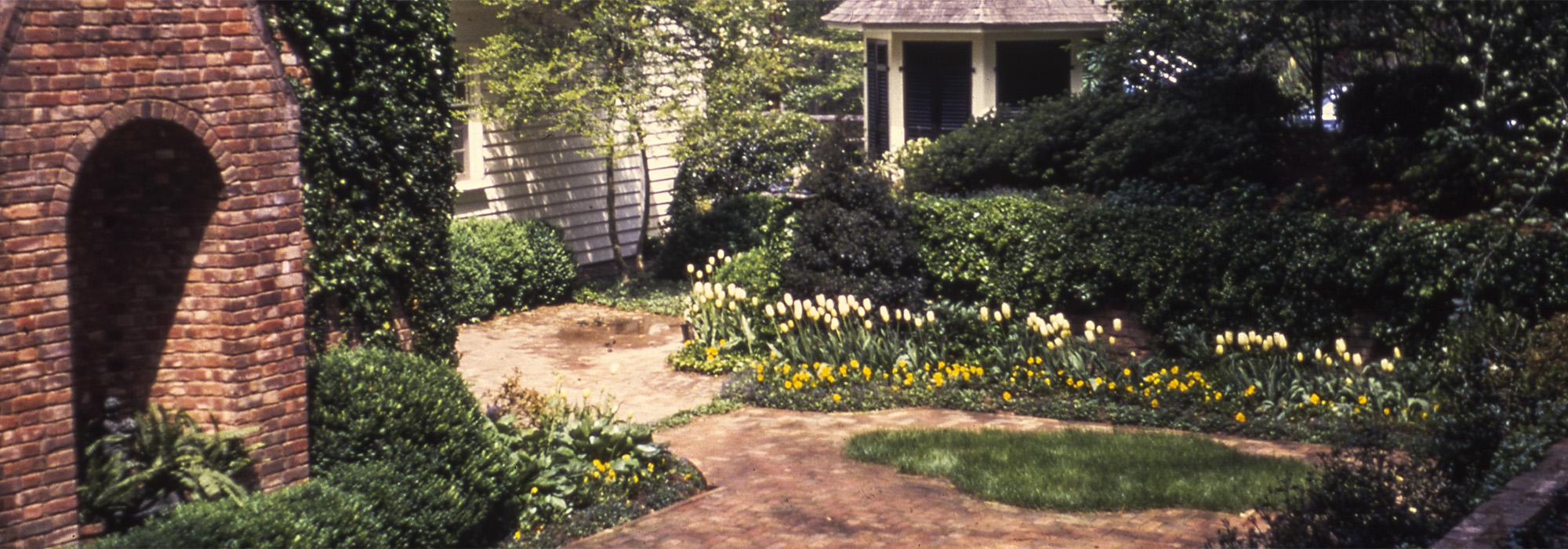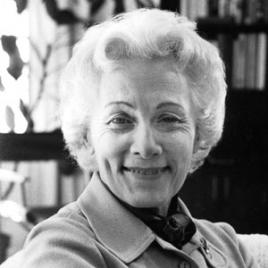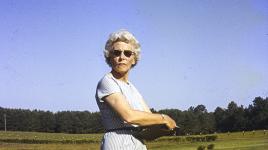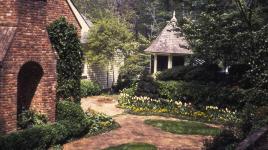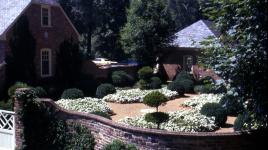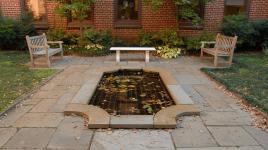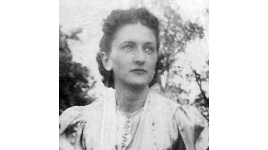Pioneer Information
Born in Charlotte, North Carolina, Henderson grew up in Atlanta, Georgia. She graduated from the Lowthorpe School of Landscape Architecture in 1934 and obtained her B.S. from Simmons College in that same year. She then returned to Atlanta, where, with Grace Campbell, she opened and developed her professional practice. In 1936, she was appointed the director of the newly established Garden Center, supported by and located in Rich’s Department Store in downtown Atlanta.
During her five-decade career as a landscape architect, Henderson performed over 10,000 consultations with clients. Some of her most important projects are the Clark Howell Homes public housing project, the grounds for MARTA, and the First Presbyterian Church of Atlanta. In addition to designing numerous residential gardens in the Atlanta area, in 1940 she began writing a weekly garden column in the Atlanta Journal Constitution, providing practical design advice to readers and featuring gardens on which she had consulted. Her column continued as a popular regular feature until 1978, and she also wrote articles for Veranda and Southern Accents magazines. In 1971 Henderson received the Oakleigh Thorne Medal of Excellence in Landscape Architecture from the Garden Club of America. In 1976 she became the first woman to be elected an officer of the American Society of Landscape Architects, serving as the organization's vice president. She later served as a member of the Society’s Board of Directors, as well as chair of the Council of Fellows, to which she was elected in 1968. Henderson died in Atlanta on October 12, 2005, of complications from Alzheimer’s disease.



